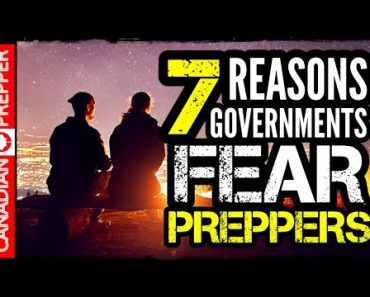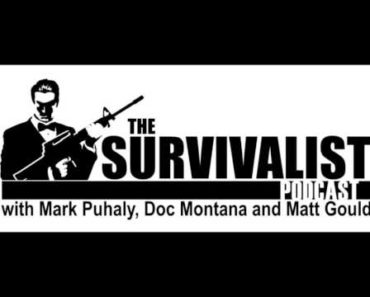I know I just wrote about war in my last message to you, but I can’t ignore what’s going on in the world today. Russia is making a move and they’re not trying to hide it. Vladimir Putin had made it clear that he wanted to take over Ukraine, finishing what he started a few years ago when he annexed Crimea into Russia. On the one hand, Ukraine is a sovereign nation, and the United States has long made a stand for territorial integrity, standing against such actions. But things don’t look the same from the Kremlin, where Putin has repeatedly said that the west ignores Russia’s security concerns.
While every country has security concerns of one sort or another, Putin’s definition is a bit different than what the modern world considers acceptable. His definition is that Russia has a buffer of other nations under their control around their borders, just like the old Soviet Union. Somehow it seems that Mr. Putin doesn’t understand or want to accept that the Soviet Union and its associated Warsaw Pact are no longer in existence.
So he’s making his move on Ukraine, or at least that’s what it looks like. This isn’t his first venture into that country, nor is it his first venture in attacking his neighbors. Besides his previous attack on the Crimean Peninsula, he also attacked the country of Georgia. His actions look more and more like a schoolyard bully, except this bully has tanks, warships, and nuclear-tipped ballistic missiles.
In the past weeks:
- Russia has moved some 100,000 troops and their military hardware to locations near the border with Ukraine.
- Russia has scheduled “exercises,” including the launching of sea-based missiles, off the coast of Ireland, which has a tiny military (7,310 total people) and a total of nine ships in their navy; the largest of which can barely be called a destroyer and is referred to as an “offshore patrol vessel,” let along anything like a battleship or aircraft carrier.
- British intelligence has uncovered a plot in which the president of Ukraine is replaced by one who is friendly to Russia.
- Putin has warned NATO that anyone who got in his way would be turned into radioactive ash.
- Putin has threatened to station Russian military forces 90 miles off the US coast in Cuba.
Of course, being the kind of person that he is, Putin justifies all his actions by publicly saying that he is taking “defensive moves” to protect his country from the “aggressions of the west.” That sounds an awful lot like the sort of rhetoric that Hitler used to take over European countries in World War II. I guess bad just won’t go away.
So, where does that leave us?
As it stands right now, it looks like there are only two options:
- Putin kicks the door open, invading Ukraine. The United States and our European allies get dragged into the war.
- Putin has been bluffing all along to bring Ukraine and NATO to capitulate to his demands.
If the second of those is the case, then it seems that Putin might have backed himself in a corner, as neither NATO nor the United States has backed down. We are busy sending troops and military hardware to Ukraine, apparently ready to defend the smaller nation. But if Putin backs down, it will look bad for him, making him out to be weak and unable to accomplish his goals. It will be much harder for him to take military action or use his military as a bully’s club the next time around.
That makes it look like we’re on the brink of war. While Putin’s actions and the things he has said can be seen as putting pressure on NATO and the US, they can also be seen as predictors of war. After all, if they aren’t a threat of war, they aren’t any other sort of threat either.
Besides the cyberwarfare risks that I talked about last week, the genuinely concerning thing about this is Putin’s intention to station military forces 90 miles off the US coast in Cuba. This is a move reminiscent of the Cuban Missile Crisis as part of the last Cold War. I assume that Putin will have learned from the mistakes of that fiasco and will make sure that any military forces, especially nuclear forces, have fully functional weapons at their disposal.
It makes no sense whatsoever for Russia to try invading the United States. Our military is still larger than theirs, and we have many more aircraft carriers. Trying to invade the US means crossing the Atlantic, with their ships under attack the whole way. It will be a bit like our efforts to ship supplies to England in the early days of World War I, except in reverse.
That doesn’t mean that they won’t attack us, though. The Japanese strategy used for attacking Pearl Harbor still makes sense, taking out the Pacific Fleet to not interfere with their takeover of the Orient. Russia could do something similar, trying to decapitate our military or even our government so that any efforts we might undertake to help Ukraine would be hampered. Without us to back them up, it is doubtful that the NATO countries will. If they do, Russia will probably have them outgunned and outmanned, making their efforts more or less futile. It would drag out into a prolonged war, but I don’t expect the best.
The other option open to them is pure blackmail, threatening to destroy some of our cities with ICBMs if we don’t stand aside while they invade. That’s Cold War strategy, the nuclear standoff between east and west that I grew up under.
But there was a difference in how the United States and the Soviet Union looked at the thermonuclear war. We saw it as a no-win situation, where both sides would be destroyed. Soviet theory on it, though, was quite different. They saw such a war as something winnable and developed their strategy in an attempt to do just that. I think it’s safe to say that the Russian military still has that philosophy and will plan any action against us with that in mind.
If I were a Russian planner, I would plan a three-pronged attack: cyberwarfare to disrupt as much as possible, especially communications; an EMP attack to take out the grid and directed nuclear missile strikes at crucial command and control, especially Washington, DC. Redundancy in war plans is essential. The overlapping of all three attacks should be enough to either decapitate US leadership or cause enough confusion to keep the US out of the war in Ukraine. As a second stage, should it prove necessary, nuclear forces back in Russia would prepare for a general strike on the US, if required.
Please note that any one of those three attacks would be devastating. Together they’ll be worse in some immeasurable way, but the reality is that any one of them would probably be enough, especially the EMP. Even so, if he wants to kick off a war, it makes much more sense to start with multiple concurrent attacks, increasing his chances of success.
So we’re facing multiple risks. Should Russia kick off against Ukraine. The relative size of the two nations and their militaries tilt strongly in Russia’s favor, so the real problem for Russia is keeping Ukraine from being reinforced. That means keeping the US and NATO either frozen by fear or incapacitated so that we can’t interfere.
We all know what an EMP attack would do to our country, as discussed repeatedly by many authors, but what about an actual nuclear strike? That was a big issue 40 years ago, but since the Berlin Wall came down, everyone has acted like the risk doesn’t exist anymore. Yet Russia still has several thousand nukes, with the ability to deliver them by bomber aircraft, missiles, or sea. We are probably less prepared to deal with that attack today than we were back when I was in elementary school.
So what do we do if Russia tries my theoretical three-pronged attack?
Our immediate concern is surviving the nuclear attack if we live anywhere near one of the targets. There are numerous maps online showing what those targets are expected to be. The question that faces you and me is how close we live to those targets. The farther we live from them, the better it will be.
The old standard was to have 30 minutes’ notice if Moscow pushed the button. But that was with the missiles having to fly here from Russia. If Putin manages to stage them in Cuba, the flight time will be down to minutes; barely enough time to head for the basement or bunker, if we get any warning at all. That basement had better be ready for us to camp out in, stocked with food, water, and other essentials because we will have to be in it for quite a while.
Surviving a nuclear attack consists of two separate but interrelated things. The first is surviving the atomic blast itself. That includes surviving the windblast, the heat, and the nuclear radiation. Keep in mind that there will be both an outgoing and an incoming wave of wind, either of which will be strong enough to knock down buildings and trees. Distance from the explosion’s epicenter is critical for this part, so your location has everything to do with your potential for survival. Those who live in small communities or out in the country will have the most excellent chances for survival; those close to government installations or military bases will fare the worst.
Location affects the second part of surviving a nuclear attack, a well, that of surviving nuclear fallout. How much of an issue fallout will depend on how close you are to any atomic explosions, along with the prevailing winds. Fallout is nuclear material that becomes attached to dust and ash from the blast and is carried up into the upper atmosphere with the rising mushroom cloud. It can take a long time for that dust to fall, which is why it is necessary to stay in the basement for a month unless competent authorities give the all-clear.
There’s a pretty good chance our government will retaliate against the Russians if they can. We still have 405 active ICBMs in the inventory and gravity bombs that can be dropped from Air Force and Navy bombers. While I’m sure some will take satisfaction from that, that revenge won’t make a difference in our survival, except in the sense that more of the world will be in a mess, so there will be even less chance of aid coming from other countries.
It’s once we emerge from our basements and bunkers, the real challenge of survival will begin. We’ll be coming out to a world in which everything we depend upon will be destroyed. At that point, it will no longer be the nuclear explosions that are the big concern, but what EMP has done to our country. Without the grid functioning, we’ll live without the infrastructure we all depend on. But as I said, that’s already been written about.
If you’re not ready now, there’s still a little time. It will take time to move weapons from Russia to Cuba, so I imagine we still have a month or two before the war can kick off. But that’s just my guess. Putin’s threat to stage military forces in Cuba could be nothing more than a threat. He could start the war tomorrow. But if he does, chances are much lower than nuclear missiles will be part of the attack plan.




























